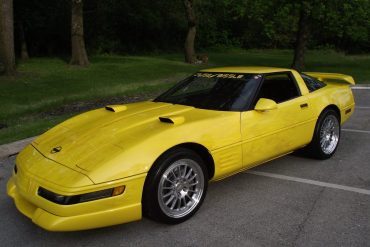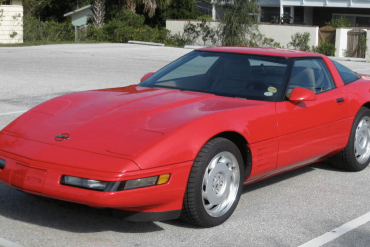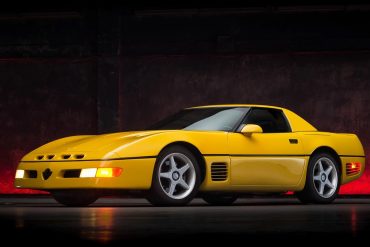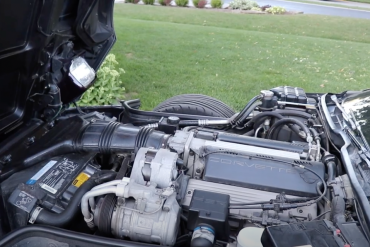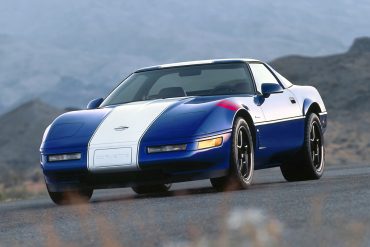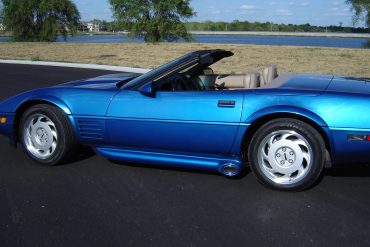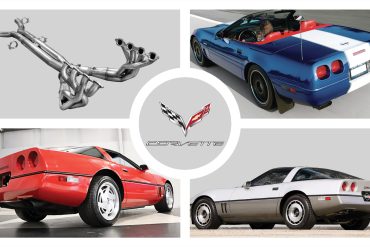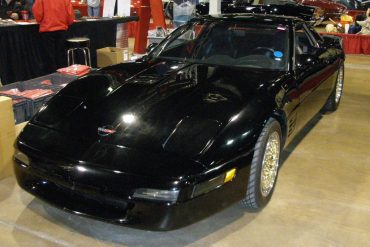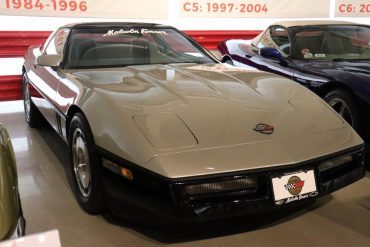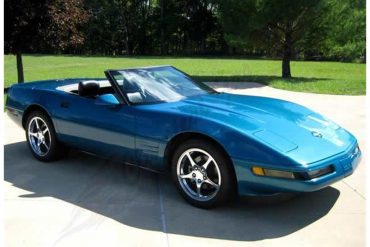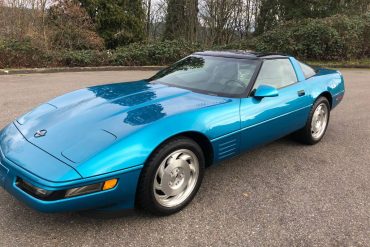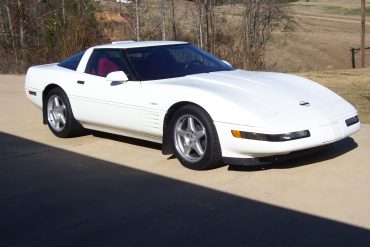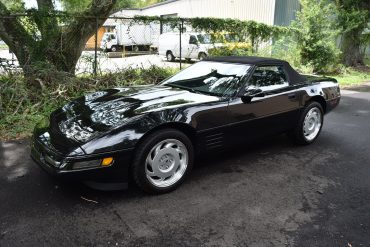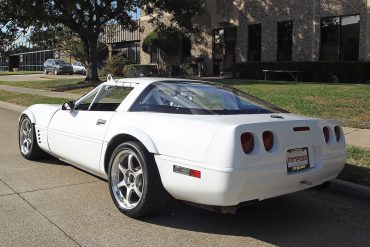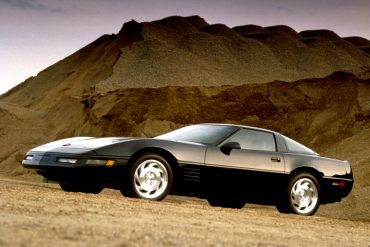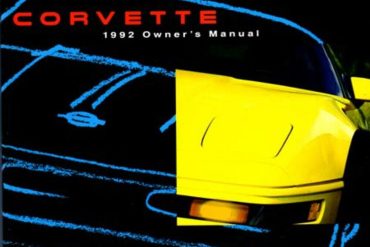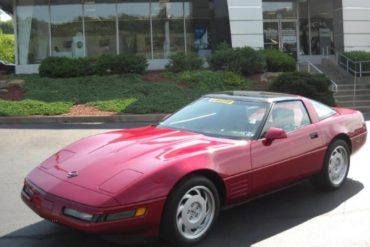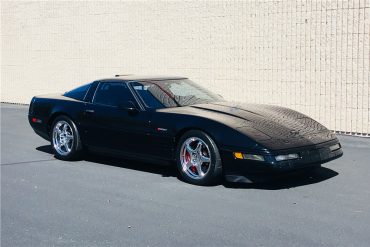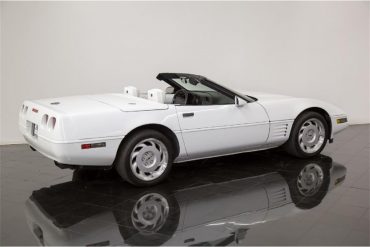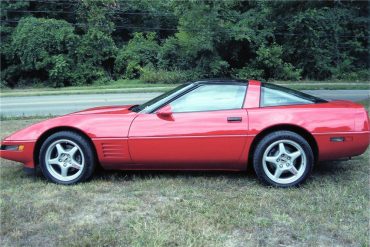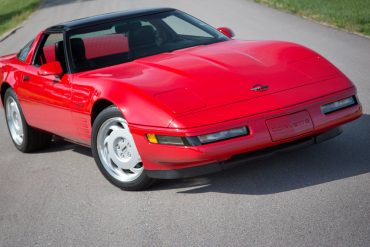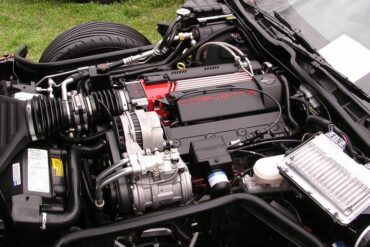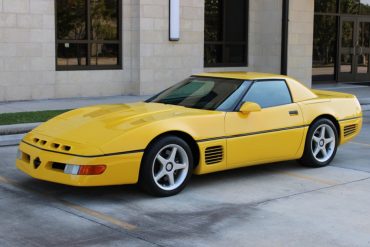Yellow 1992 Chevrolet Corvette We found some examples of 1992 Corvette in the Yellow color scheme. These real Yellow paint pictures of...
Falling sales numbers weren’t isolated to the ZR-1 Corvette alone. In all, General Motors sold a mere 20,479 Corvettes during the course of its 1992 model year.
In August 1992, Callaway Cars of Old Lyme, Connecticut, modified this 1992 Chevrolet Corvette convertible, resulting in a remarkable transformation....
The early C4's had their problems, what with the 1984 Cross-Fire Injection and its unusual 4+3 manual transmission. By the late 1980's, the fourth-generation Corvette had evolved into a more desirable automobile, thanks in part to the arrival of the ZR-1.
Browse 1992 C4 Corvette pictures, photos, and images. Explore and get inspired by hundreds of interior, exterior and action photos.
Quasar Blue 1992 Chevrolet Corvette We found some examples of 1992 Corvette in the Quasar Blue color scheme. These real Quasar...
These are the top full exhausts for 1984-1996 Corvettes. The installation of a custom exhaust provides a great way to...
CERV IV was nothing more than a C4 with the all new powertrain and interior in it. Read the commentary of a car magazine reporter: "We suspect that the first, very early prototypes of the all-new, Gen III ran on the dynos at GM Powertrain sometime in the early spring of 1993. In-vehicle testing began at the GM Milford Proving Ground in the first week in May of 1993 with the "Chevrolet Engineering and Research Vehicle IV-A".
After a yearlong hiatus leading to a non-existent 1983 production run, the completely redeveloped fourth-generation Corvette emerged onto the scene...
See the complete technical specifications and performance information for the 1992 Chevrolet Corvette, including engine specs, acceleration, & quarter mile.
Chevrolet's introduction of the LT1 in 1992 as the base engine in the Corvette phased out the L98 based Callaway Twin Turbo. Previously, Callaway Corvettes made their increased power through positive manifold pressure; now they made it through increased displacement and finesse. Initially called the CL1 or CR1, they designated the chassis they were built upon. They were based on the pushrod LT1 cars (CL1) or the 32 valve DOHC LT5 ZR-1 cars (CR1).
The 1992 Stingray III / California Stingray Concept was developed by John Schinella (and team) at GM's Advance Concept Center in Los Angeles. The 1992 concept is a world away from the C4. But the dominant motifs of a smooth rounded Corvette did come to production on the C5. This prototype looks distinctly upmarket, the rear shares a shocking similarity to the Jaguar XK8, without a flat surface in sight.
Bright Aqua 1992 Chevrolet Corvette We found some examples of 1992 Corvette in the Bright Aqua color scheme. These real Bright...
The following list of common issues is intended for individual reference only, and may not reflect the specific issues of every 1992 Corvette.
Black 1992 Chevrolet Corvette We found some examples of 1992 Corvette in the Black color scheme. These real Black paint pictures of...
White 1992 Chevrolet Corvette We found some examples of 1992 Corvette in the White color scheme. These real White paint pictures of real 1992 Chevy Corvette really show...
We have curated the ultimate collection of the 1992 Corvette Wallpapers and HD backgrounds for you to enjoy. Free to download
Looking for information on how to maintain your 1992 Corvette? We've curated resources to help you keep your Corvette in great shape for years to come!
This Owners Guide contains important information regarding the operation and maintenance of your 1992 Corvette. In order to obtain maximum enjoyment and usage from your car, we suggest that you familiarize yourself with the contents...
Dark Red 1992 Chevrolet Corvette We found some examples of 1992 Corvette in the Dark Red color scheme. These real Dark...
This 1992 Chevrolet Corvette ZR1 has less than 45,560 actual miles. It is powered by a 5.7-liter V8 engine mated...
1992 C4 Corvette Ultimate Guide. History, Production Stats & Facts, Engine Specs, VIN Numbers, Colors & Options, Performance & Much More, we cover it all.
The Corvette team decided to one-up the Viper with four extra cylinders, they decided on one of Ryan Falconer’s stunning, all aluminum, 600-cubic-inch, 683hp, 680 lb-ft V-12 racing engines. The biggest challenge was the fact that the all-aluminum V-12 engine was 8.8-inches longer than the production Corvette engine. So the front end of the ZR-1 would have to be stretched 8 inches. This test car was named Conan, after his raw, beastlike charisma.
The Corvette Stingray Concept was developed as an internal design challenge to combine classic Corvette cues with surprisingly high-tech features, modern materials, and a striking new appearance. The car is well-appointed with a clamshell hood, scissor-style doors, ergonomic seats, rear-view camera with night vision enhancement, and a high performance hybrid drive. Interactive touch controls allow the driver to customize the power and efficiency of his or her ride.
1992 C4 Corvette RPO Codes, Options Codes & Order Guide If you are looking to decode your 1992 Corvette RPO’s...
For all 1992 Corvettes, the Vehicle Identification Number was stamped on a plate on the inner vertical surface of the left windshield pillar visible through the windshield.
Bright Red 1992 Chevrolet Corvette We found some examples of 1992 Corvette in the Bright Red color scheme. These real Bright...
GM ultimately decided to postpone the release of their fifth-gen Corvette, largely due to budgetary constraints. However, the development of a new powerplant for the aging C4 Corvette was greenlighted nonetheless. This engine carried the LT1 designation, and prove quite capable. The 1992 LT1 would serve as a bridge between GM small-block development.
Don’t Just get a Corvette, Get a Callaway Corvette If you love the C4 Corvette, but just want something that’s...


